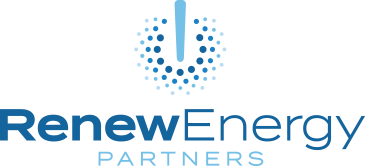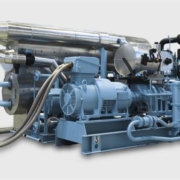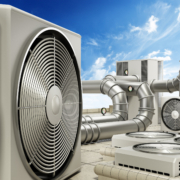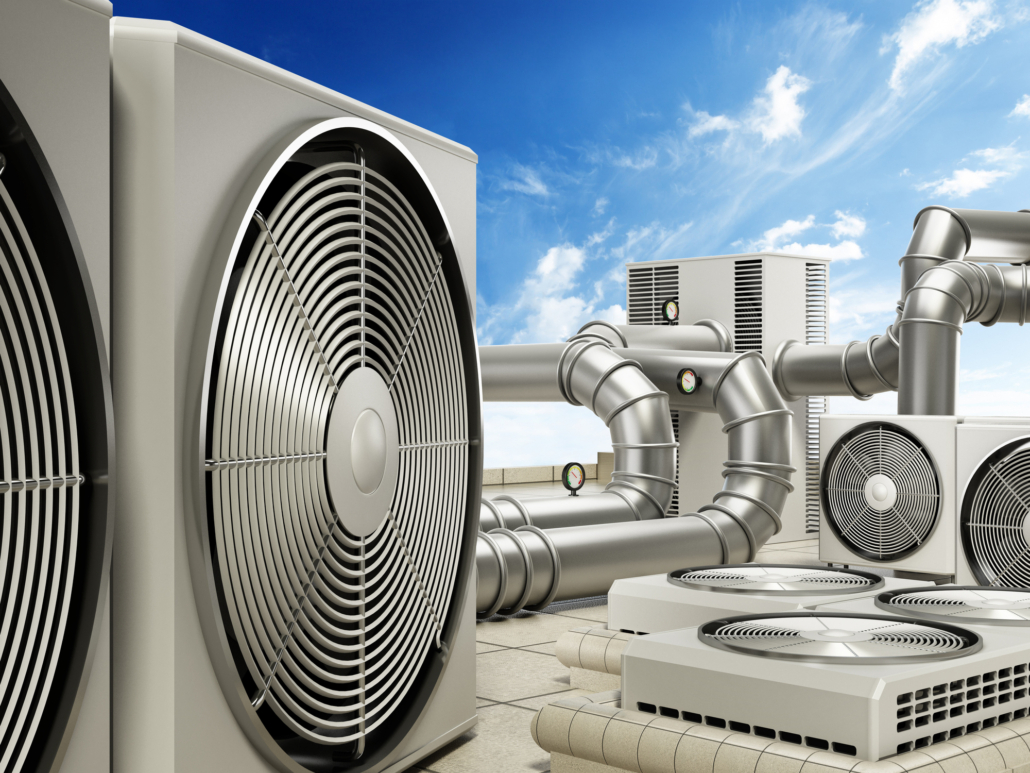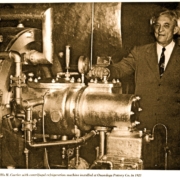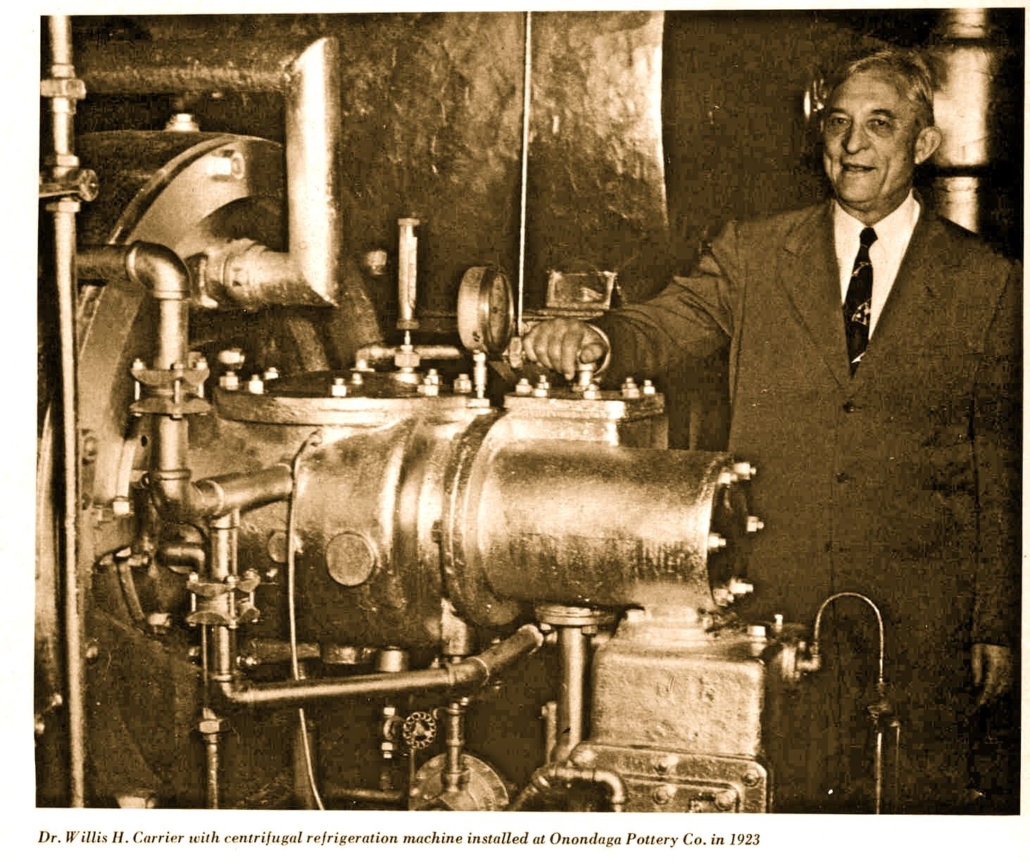The Future of HVAC Retrofits
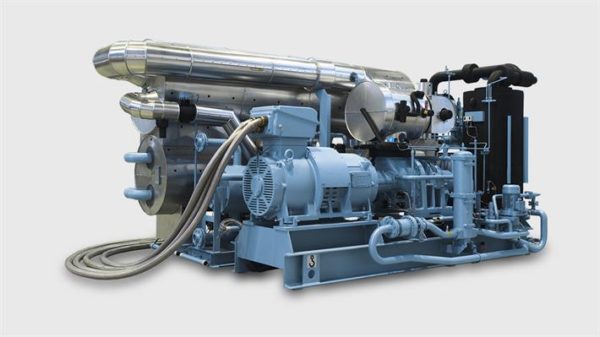
RENEW Energy Partners specializes in funding energy efficiency retrofits for your commercial, industrial, and institutional buildings. There are many different technologies we can install to make your buildings more efficient and reduce your energy bill. One strategy for significant savings is to upgrade to your commercial HVAC systems to heat and cool your building more efficiently.
The Future of HVAC Retrofits
For our last two blog posts we have talked about HVAC, its history, current technology, and its important role in energy efficiency retrofits. But beyond the basics, there is newer technology that promises to be the future of HVAC retrofits. This technology shift is often referred to as electrification.
HVAC Electrification:
Electrification, or converting your heating from fossil fuel burning systems to electric, is a common and effective energy efficiency retrofit that will further decarbonize your building and could eliminate your gas, oil, or steam utility bills. Just like the rapid advancement of electric vehicles, there is no point of use emissions. Your buildings environmental impact is now tied to the local utility grid carbon intensity. Combining full building electrification and either on-site or off-site renewables allows buildings to be carbon net-zero.
The two most common HVAC retrofit projects include heat pump and electric boiler installations. Heat pumps in particular are a revolutionary invention because they can address both heating and cooling, sometimes simultaneously, and are always more energy efficient than burning a fossil fuel on site.
What are Heat Pumps?
In simple terms, a heat pump moves heat from a cold place to a warm place. They are powered by electricity and transfer heat using compressors and a refrigerant. In cooler months, this can mean pulling heat from the cold outdoor air and transferring it indoors. In warmer months, they can pull heat out of indoor air to condition a space. In colder climates, a secondary electric heat source can be added for additional or backup capacity. Heat pumps do not burn fossil fuel like an oil or gas furnace does, making them more environmentally friendly. Additionally, because they move heat instead of generating it, heat pumps will only consume between 20% and 50% of the energy input that a boiler or furnace (even an electric one) would need to provide the same amount of heat.
There are a few different types:
- Air Source Heat Pumps: Air source heat pumps absorb heat directly from the air. They are not as effective in cold weather, as there is a minimum air temperature at which they can operate (depending on the refrigerant used). Air source heat pumps generally work best in mild climates or during the “shoulder season” – temperatures between 5 and 25 degrees Celsius (between 41 and 77 degrees Fahrenheit), though some can operate below freezing at a reduced capacity.
- Ground Source Heat Pumps: These heat pumps absorb heat from the ground. In cold weather, ground source heat pumps are more effective than air source heat pumps, because the ground retains heat through the winter. In most cases, the ground temperature will stay above 5 degrees Celsius (41 degrees Fahrenheit) allowing for year-round operation. This can also be called a geothermal heat pump.
- Water Source Heat Pumps: In addition to pulling heat directly from the air and ground, heat can be conducted via water from almost any other heat source. Water can contain more heat than air can (think about a cast iron pan cooling in the air vs being doused with cool water), which is why many buildings already distribute heat with water. By integrating with the existing building infrastructure, these heat pumps can make use of energy that may currently be going to waste, such as the heat rejected from refrigeration or a data center. In this case, the name can be confusing because “water source” is misleading – the water is the medium but not the ultimate “source” like air or ground are for the other examples above. A water source heat pump is a general term for a heat pump that uses any other heat source as an input, conducted to it via water piping. There are also true “water source” heat pumps that can pull heat from a lake or river, but they’re uncommon. Four-pipe heat pumps can heat and cool, but not simultaneously. Six-pipe heat pumps (and some specialized “heat recovery style” four-pipe systems) can heat and cool at the same time, which is ideal for buildings that require heated office space as well as significant amounts of freezer storage. Read more about water saving retrofits here.
What are the Electric Boiler Options?
- Electric Boilers: Electric heaters are powered by electricity, whether from the electric grid or stored in batteries. Typically, electric boilers can transfer 100% of their provided electrical energy into heat, though there are slight losses in the electric and heat distributions. They are safe, energy efficient and affordable. Cons include that they are affected by power outages.
- Electric Infrared Heaters: An infrared heater is typically more efficient than a standard electric boiler, as there are fewer losses in distribution. 100% of the energy produced can be kept in the conditioned space. An infrared heater also has more power options. They can be powered by electricity, but also by propane and natural gas (which would bring up the carbon footprint and is not recommended for an energy efficiency retrofit).
Conclusion
To summarize, when contemplating an energy efficiency retrofit project, implementing HVAC retrofits to your systems is a crucial way to decarbonize and save money. While you can update more traditional fossil-fuel-powered heating and cooling modules to be more energy efficient, the most progressive update you can make is to electrify your HVAC. This will lower your bills, decarbonize your building, and will benefit the health of all employees. It will also clearly position you and your company as a leader in carbon reduction.
No matter how you decide to increase your energy efficiency and decrease your carbon footprint, these kinds of project require funding. In order to fund an energy efficiency project for your building(s), RENEW Energy Partners offers an energy service agreement (ESA). The Energy Service Agreement:
- Can be treated as an off-balance sheet transaction. You do not own the asset or carry it on your balance sheet. (Renew does not provide accounting advice. Our customers consult their own accounting teams on accounting treatment).
- RENEW provides preventive and corrective maintenance in the service agreement.
- Your payment to RENEW will be based on the energy savings confirmed once the system is operational.
Unlike a lease or a loan, which are on balance sheet, do not include maintenance, and may or may not deliver energy savings, the service agreement provides all of the above and then some:
- Executing a service agreement is fast – once the project is scoped by an energy professional (and we can recommend one), you execute a simple service agreement contract and RENEW will fund the project.
- Executing a service agreement frees up your capital budget for your other priorities, allowing you to focus on growing your core business.
- Executing a service agreement now means your net cash flows are higher than waiting and doing it yourself in a year.
- And finally – executing a service agreement means flexibility. Perhaps you buy another building or look at additional efficiency measures–with a one-page addendum to your existing ESA you can have those new lights, HVAC, and controls at your new building, and you simultaneously reduce your operating expense!
The RENEW Energy Service Agreement allows businesses to focus on what they do best, while ensuring that their facilities are performing at their peak with brand new, and high-efficiency equipment. In this current climate of cost control and resource allocation, the energy service agreement is the perfect solution to help businesses meet sustainability goals and keep facilities in top condition. Reach out to RENEW and talk to us about financing your energy saving retrofits today.
